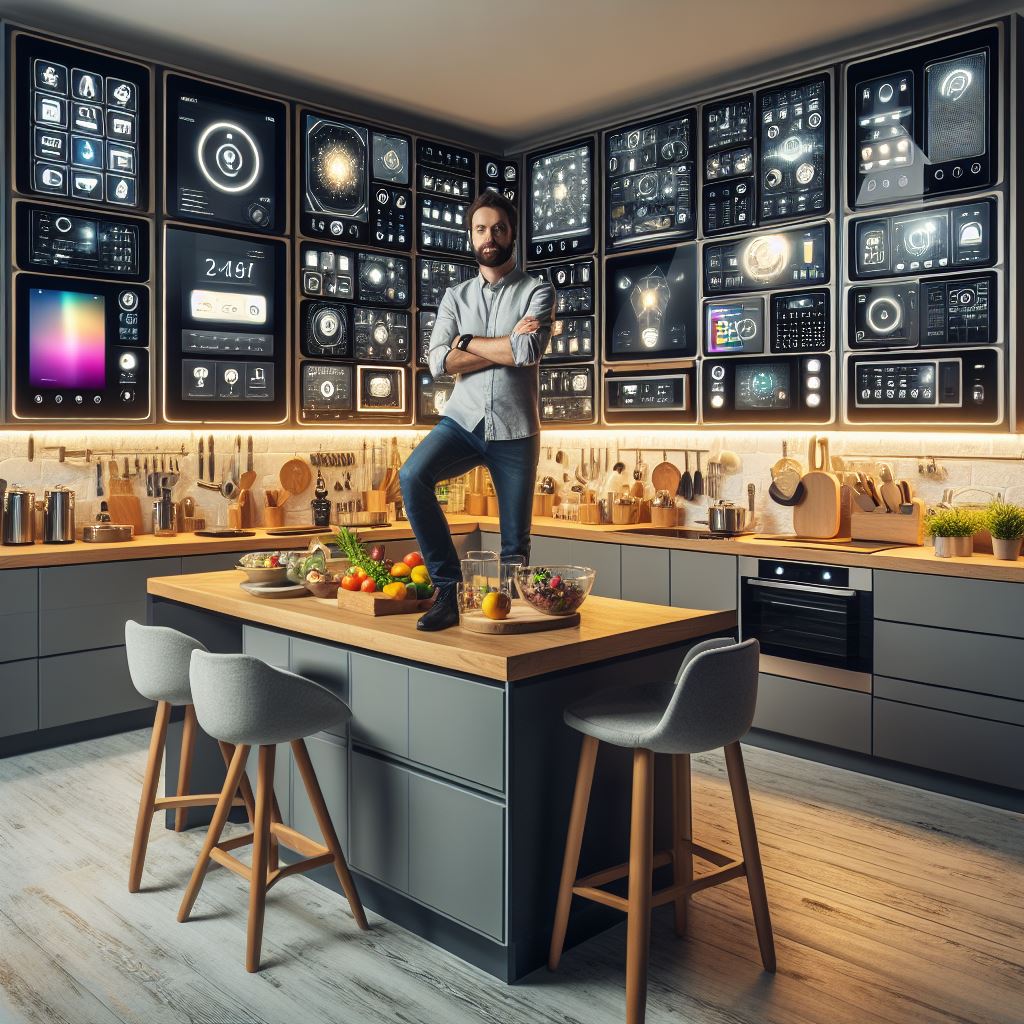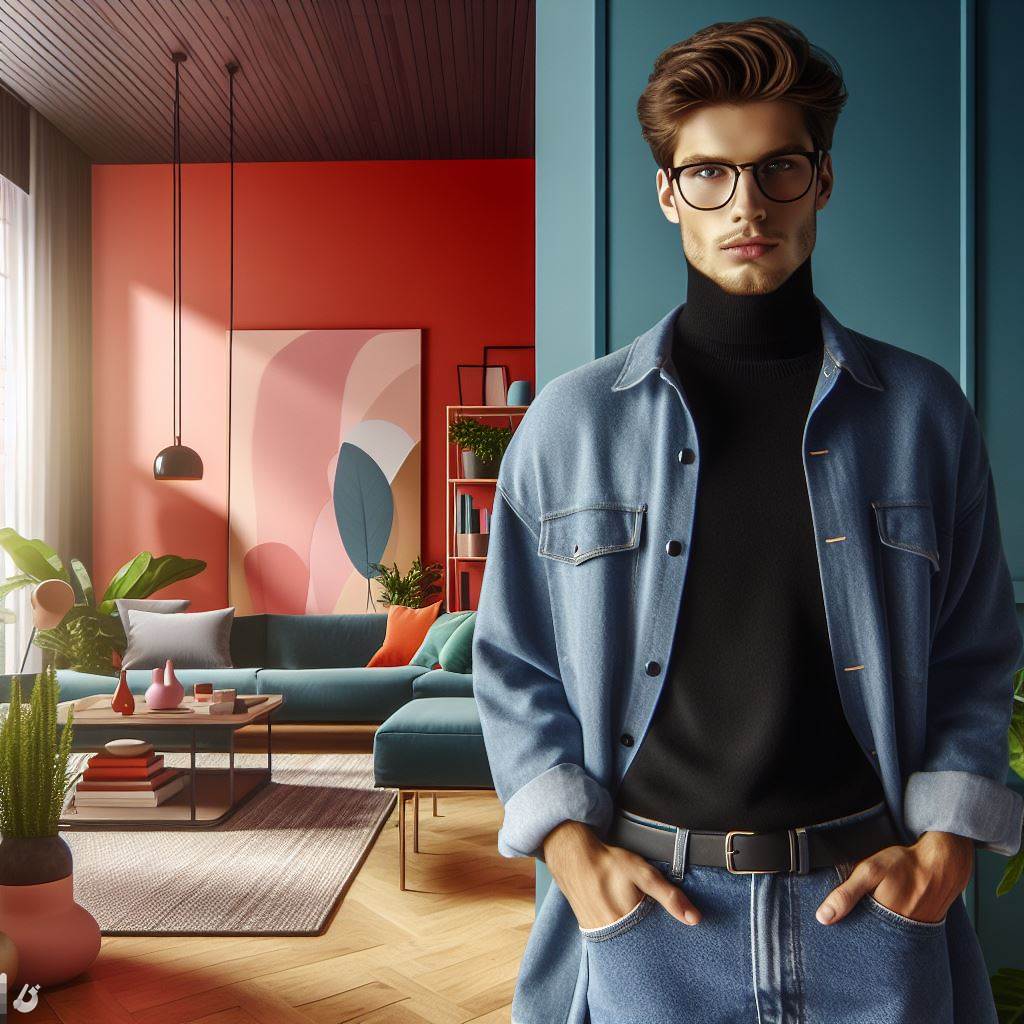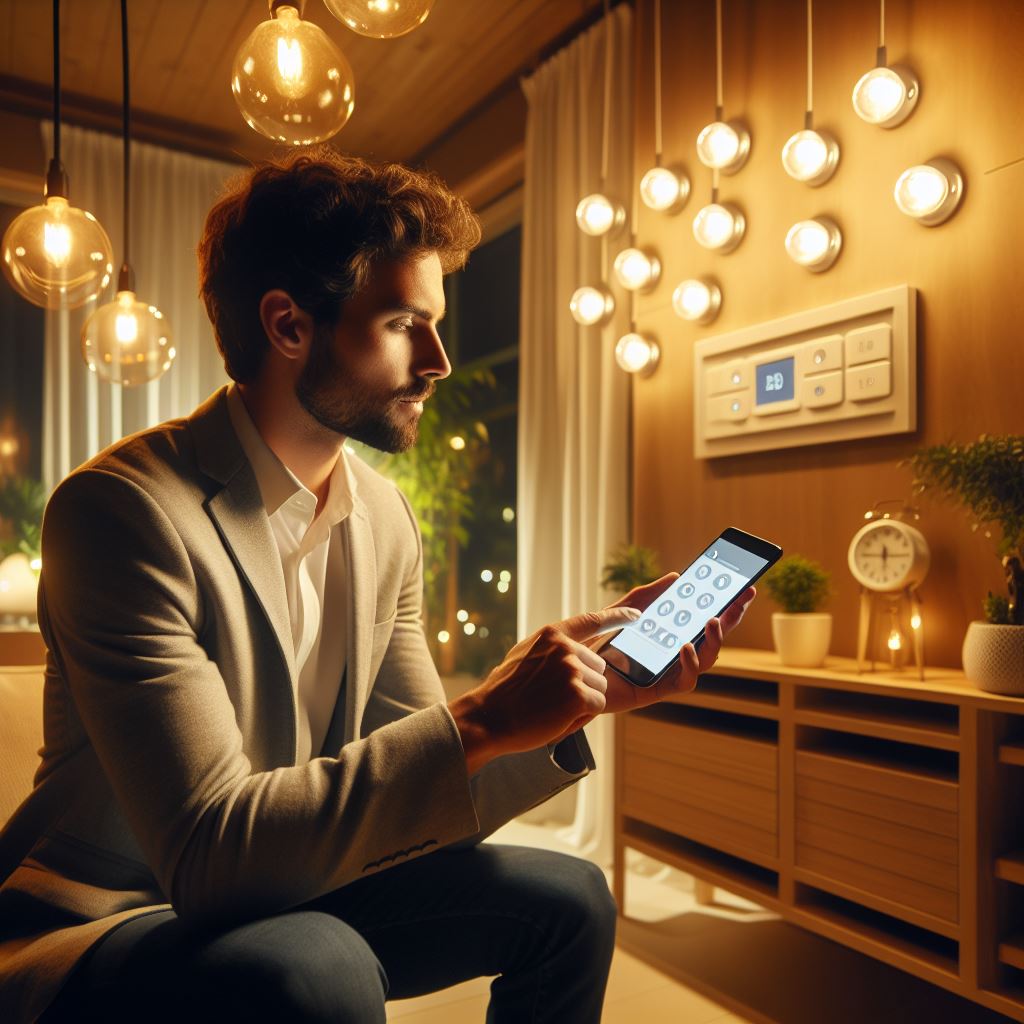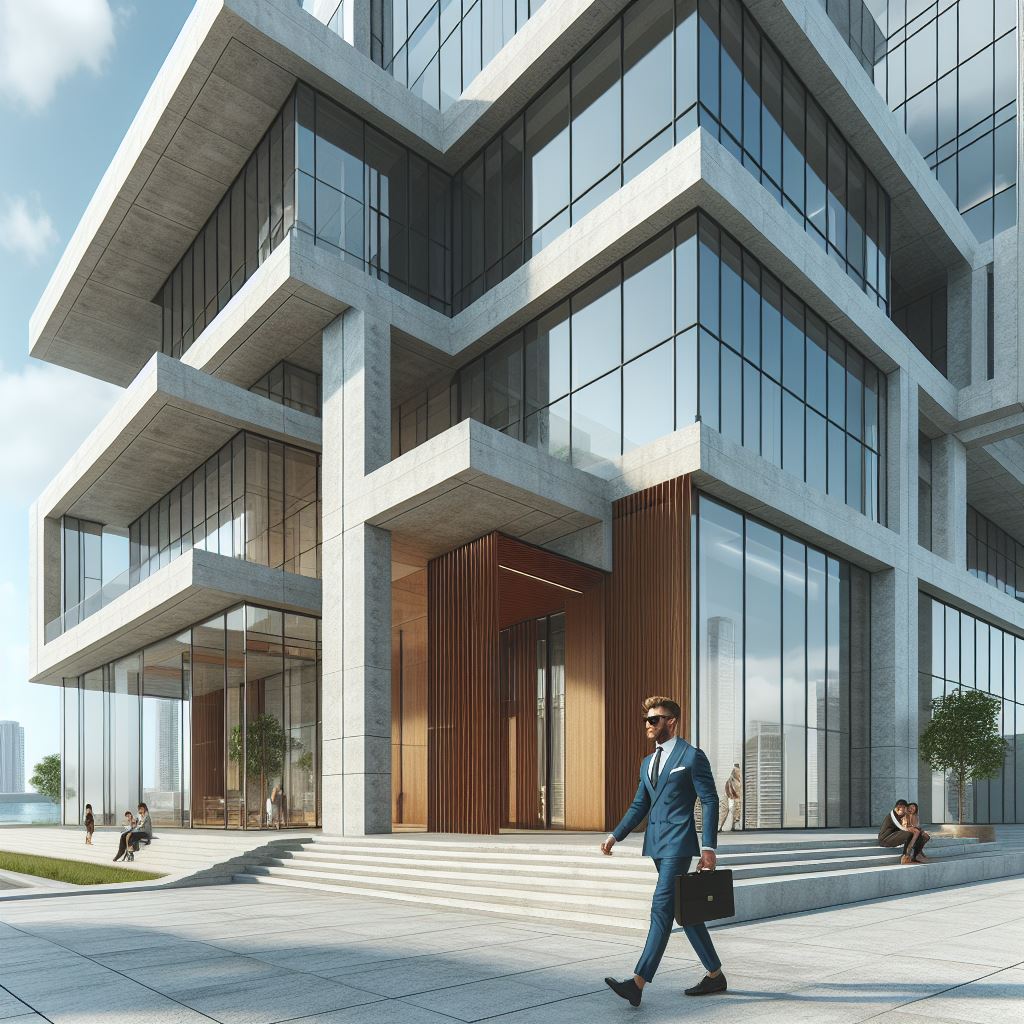Introduction
In today’s design world, a new trend called hybrid design has gained immense popularity.
This unique concept combines two contrasting styles – rustic and modern – to create a harmonious and visually stunning aesthetic.
The phrase “rustic meets modern” represents the fusion of these two distinct design elements.
So, what makes this design style so appealing and popular? One reason is the inherent charm and character that rustic elements bring to a space.
Rustic design evokes a sense of warmth, history, and authenticity with its use of natural materials and textures.
On the other hand, modern design focuses on sleek lines, minimalism, and contemporary finishes.
It embraces clean, uncluttered spaces that exude a sense of sophistication and innovation.
When these two styles are combined, a unique visual contrast is created that appeals to a wide range of design enthusiasts.
Moreover, the appeal of rustic meets modern design lies in its versatility.
It can be seamlessly incorporated into various settings, from urban apartments to countryside retreats.
This design style offers a blend of tradition and innovation, bridging the gap between the old and the new.
Another reason for its popularity is the opportunity it provides for personalization.
With a combination of rustic and modern elements, homeowners and designers can imbue their spaces with their own unique style and personality.
The juxtaposition of old and new creates a dynamic and eclectic ambiance that tells a story.
In the following sections, we will explore the different aspects of rustic meets modern design, including its key elements, how to achieve this style, and inspiring examples that showcase the beauty and versatility of this trend.
Get ready to be inspired by the captivating world of hybrid design.
Embracing the Rustic
Rustic design is a style that brings a sense of warmth, coziness, and simplicity to any space.
It often reminds us of a cabin nestled in the woods or a charming farmhouse in the countryside.
By incorporating natural elements and embracing imperfections, rustic design can create a welcoming and inviting atmosphere.
Elements typically associated with rustic design
The elements typically associated with rustic design are raw and organic.
Natural materials like wood and stone play a significant role in bringing this aesthetic to life.
Wood is often used for furniture, flooring, and even wall coverings, adding a touch of nature indoors.
The grain and knots in the wood showcase its unique character, making each piece one-of-a-kind.
Stone, another essential element in rustic design, adds a touch of earthiness and texture.
Whether used in the form of a fireplace surround or a feature wall, stone brings an authentic and grounded feel to a space.
Its various textures and colors can be blended seamlessly with other rustic elements to create a cohesive design.
Warm and cozy ambiance created by rustic design
In rustic design, simplicity is key. The color palette tends to be neutral, with earth tones like browns, beiges, and grays taking center stage.
These colors evoke a sense of calmness and harmony, perfect for creating a peaceful and serene environment.
Warm colors, such as deep reds and oranges, can be added as accents to create a cozy feel.
Rustic design does not shy away from imperfections. In fact, it embraces them wholeheartedly.
Distressed furniture and exposed beams are common in rustic spaces, adding a sense of history and character.
These imperfections tell a story and create a unique charm in the design.
Texture is another critical aspect of rustic design. It adds visual interest and depth to a space.
Through the use of various textiles like wool, linen, and burlap, a cozy and tactile feel is created.
Soft and plush fabrics, such as faux fur or chunky knit throws, contribute to the overall warmth and comfort of a rustic space.
Accessories and decor play a vital role in completing the rustic look.
Vintage and antique pieces are often incorporated, adding a sense of nostalgia and authenticity. Rustic metals like wrought iron or distressed copper can be used for light fixtures and hardware, adding a touch of ruggedness.
Natural elements like plants and flowers are also essential in rustic design.
Potted herbs or wildflowers in mason jars bring a fresh and organic feel to the space.
These natural elements further enhance the connection to the outdoors, making the space feel more grounded and peaceful.
In fact, rustic design embraces elements typically associated with nature and the great outdoors.
By using natural materials, warm colors, and embracing imperfections, a warm and cozy ambiance is created.
Rustic design brings a sense of comfort and simplicity, making any space feel like a peaceful retreat from the hustle and bustle of everyday life.
Read: Minimalism in 2024: Sleek & Simple Interiors
Modern Touches
Modern design is known for its sleek and streamlined look, characterized by clean lines and minimalist aesthetics.
This design style emerged in the early 20th century and has remained popular ever since.
When it comes to incorporating modern touches into rustic spaces, it creates an interesting and striking contrast that captivates the eye.
In this section, we will outline the characteristics of modern design, discuss the emphasis on clean lines and minimalist aesthetics, and delve into the use of modern materials like glass and metal.
Characteristics of modern design
Modern design is characterized by simplicity, elegance, and functionality. It often features open floor plans, neutral color palettes, and a lack of ornate details.
One of the key aspects of modern design is the emphasis on clean lines.
Unlike traditional styles that may incorporate intricate carvings or decorations, modern design opts for simplicity and embraces the beauty of smooth and sleek lines.
This clean and uncluttered look creates a sense of openness and spaciousness.
Minimalism is another hallmark of modern design. It revolves around the idea of less is more, focusing on the essentials and eliminating excess.
Minimalist aesthetics involve decluttering and organizing spaces, with a focus on functionality and purpose.
Furniture and decor in modern design tend to have simple and clean shapes, without unnecessary embellishments.
This minimalist approach creates an atmosphere of calmness and tranquility.
The use of modern materials like glass and metal
Incorporating modern materials like glass and metal is a popular way to add a contemporary touch to a rustic space.
Glass, with its transparency, can provide a sense of lightness and airiness.
It can be used for windows, doors, and even furniture pieces like coffee tables or shelves.
Metal, on the other hand, brings a sleek and industrial vibe to the design. It is often used for furniture legs, light fixtures, or decorative accents.
The combination of rustic elements with these modern materials creates an interesting juxtaposition.
Using glass in a rustic kitchen, for example, can create a unique and captivating look.
Install glass cabinets to showcase your rustic kitchenware or use a glass backsplash to add a touch of modernity to the space.
This allows the rustic elements like wooden beams or exposed brick walls to coexist harmoniously with the sleekness of glass.
Similarly, incorporating metal accents in a rustic living room can add a contemporary edge.
Choose metal coffee tables, light fixtures, or even metal-framed mirrors to enhance the modern vibe.
When it comes to incorporating modern touches into rustic spaces, it’s important to strike a balance and maintain the integrity of both styles.
The key is to selectively choose modern elements that complement and enhance the rustic aesthetic.
By mixing the warmth and character of rustic design with the sleekness and simplicity of modern touches, you can create a space that is both visually captivating and functional.
In short, modern design is characterized by clean lines, minimalist aesthetics, and the use of modern materials like glass and metal.
When combined with rustic elements, it creates a unique and captivating hybrid style.
By carefully selecting and incorporating modern touches into rustic spaces, you can achieve a harmonious blend of old and new, creating a space that is both visually appealing and functional.
So go ahead, embrace the beauty of modernity in your rustic sanctuary.
Blending the Styles
In the world of interior design, there has been a recent surge in the popularity of combining rustic and modern elements.
This hybrid design trend, known as ‘Rustic Meets Modern,’ blends the best of both worlds to create a unique and visually appealing space.
The process of integrating rustic and modern elements
The process of integrating rustic and modern elements involves carefully selecting specific pieces that complement each other.
It’s important to find a balance between the two styles, creating a harmonious mix that feels cohesive.
How contrasting textures and materials can create interest
Contrasting textures and materials can play a pivotal role in achieving this desired effect.
Combining rough, reclaimed wood with sleek, metallic accents can create visual interest and add dimension to a space.
This juxtaposition of textures adds depth and character to a room.
Importance of balancing the two styles in a harmonious way
When it comes to furniture, incorporating both rustic and modern pieces can help strike a balance in style.
For example, pairing a weathered, vintage table with modern, minimalistic chairs can create an intriguing contrast.
Mixing and matching different eras and aesthetics can result in a visually captivating space.
In addition to furniture, incorporating rustic and modern elements in the decor can also create a cohesive design.
One option is to use modern art or photography against a backdrop of rustic, reclaimed wood.
This combination allows for a beautiful fusion of old and new, creating a visually striking focal point.
If you prefer a more subtle approach to blending the styles, consider incorporating rustic and modern elements through lighting fixtures.
Combining industrial-style lighting with natural, exposed wood can produce a stunning effect.
The warm glow of vintage-inspired light bulbs against rustic textures adds a cozy ambiance to any space.
Another significant aspect of integrating rustic and modern elements is the color palette.
Balanced color schemes that incorporate neutral tones with pops of bold colors can tie the two styles together.
For example, pairing a rustic wooden floor with sleek white walls and bright, modern accessories can create a cohesive and visually interesting space.
Finding Harmony
The key to successfully blending rustic and modern styles is finding a harmonious balance.
While the styles may seem opposing, they can be united to create a space that feels inviting and visually appealing.
One important factor to consider is the scale and proportion of the elements.
Large, chunky rustic furniture may overpower a space when paired with small, delicate modern accessories.
Finding the right balance and ensuring that each element complements the others is essential.
Additionally, it is crucial to consider the overall feel and atmosphere that you want to create.
Rustic elements often evoke a sense of warmth and coziness, while modern elements can exude sleekness and sophistication.
Finding a way to combine these feelings to create a harmonious space is key.
In general, the hybrid design trend of ‘Rustic Meets Modern’ brings together the best of both worlds.
By carefully integrating rustic and modern elements, playing with contrasting textures and materials, and finding a harmonious balance, you can create a space that is visually captivating and inviting.
Read: Automated Systems for Efficient Living
Incorporating Rustic Features in a Modern Space
When it comes to designing a modern space with a touch of rustic charm, there are several practical tips that can help create a beautiful hybrid design.
Mixing Materials
One way to incorporate rustic features in a modern space is by mixing materials.
For example, using reclaimed wood accents or furniture can add a rustic touch to an otherwise sleek and contemporary room.
Consider incorporating a reclaimed wood coffee table or a reclaimed wood feature wall to create a focal point in a modern living room.
Natural Textures
In addition to using reclaimed wood, incorporating natural textures can also add a rustic element to a modern space.
Exposed brick or stone walls can bring a sense of warmth and depth to an otherwise minimalist room.
Consider leaving a section of brick or stone exposed as a feature wall, or use brick or stone veneers to create an accent wall.
Rustic Lighting
Another way to add rustic touches to a predominantly modern space is by incorporating rustic lighting fixtures.
Consider using a wrought iron chandelier or pendant lights with Edison bulbs to create a rustic focal point in a modern dining room or kitchen.
These rustic lighting fixtures can provide a warm and cozy atmosphere while still maintaining a modern aesthetic.
Antique Accessories
Introducing antique accessories can also help blend rustic elements into a modern space.
Consider incorporating vintage furniture or accessories, such as a vintage chest or antique mirror, to add character and history to a modern bedroom or living room.
Mixing modern furniture with a few antique or vintage pieces can create a unique and eclectic vibe.
Earthy Color Palette
Choosing an earthy color palette can also help create a harmonious blend of rustic and modern elements.
Opt for warm, neutral tones such as beige, brown, and gray, which can work well with both rustic and contemporary styles.
Use these colors for walls, upholstery, and accessories to create a cohesive and balanced design.
Embracing Imperfections
Rustic design embraces imperfections, so don’t be afraid to let some elements show their age.
For example, if you have old wooden beams in a modern space, consider leaving them exposed instead of covering them up.
Embracing the natural wear and tear of materials can add character and authenticity to the design.
Balance and Contrast
Finally, it’s important to find a balance between the rustic and modern elements in a hybrid design.
Too much of one style can overpower the other and create a disjointed look.
Aim for a harmonious blend by using rustic features as accents or focal points, and balancing them with sleek and minimalist modern elements.
In review, incorporating rustic features in a modern space can be achieved by mixing materials, using natural textures, incorporating rustic lighting, introducing antique accessories, choosing an earthy color palette, embracing imperfections, and finding a balance between rustic and modern elements.
By following these practical tips, you can create a beautiful hybrid design that combines the best of both worlds.
Read: AI in Construction: A Game Changer
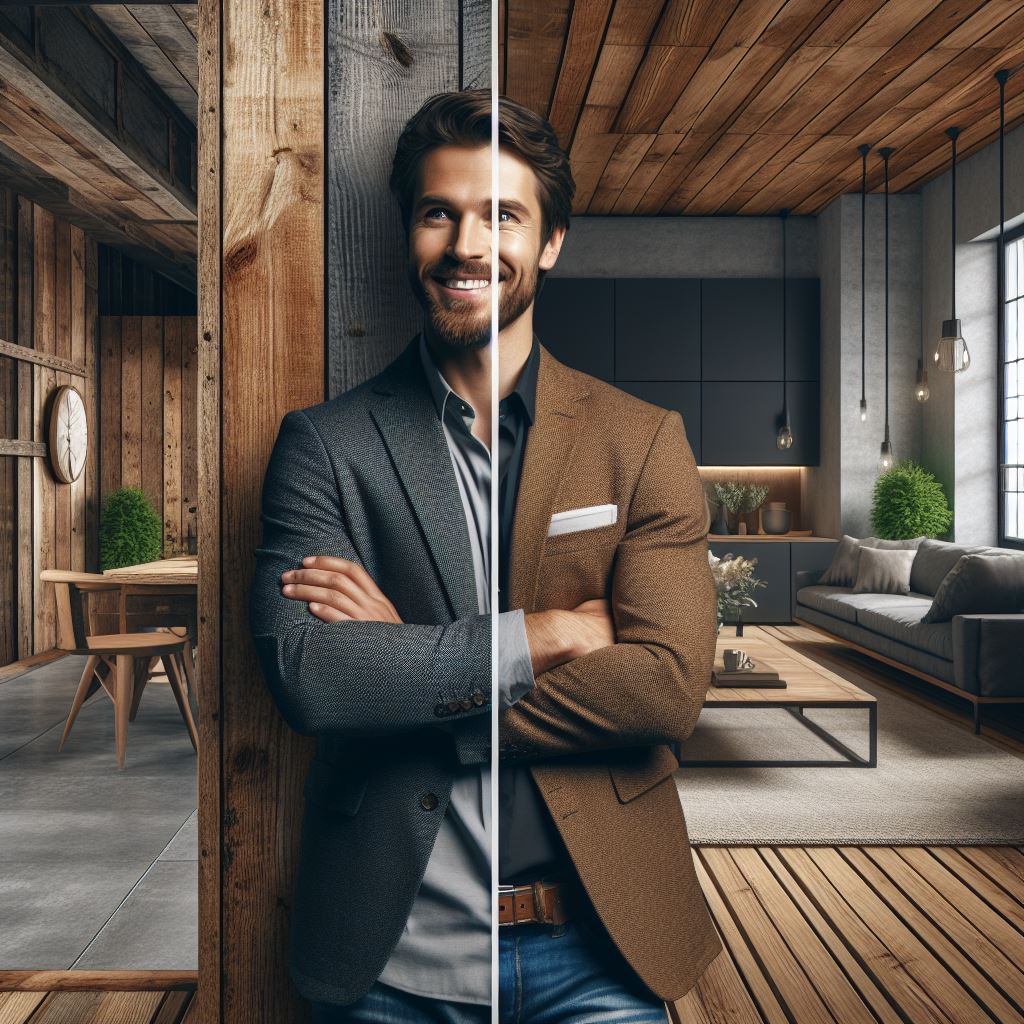
Adding Modern Flair to a Rustic Environment
Rustic design is all about embracing the natural elements and creating a cozy, warm atmosphere.
However, if you’re craving a touch of modernity in your rustic environment, there are ways to make it happen. Here are some suggestions:
Introduce Modern Elements
One way to add a modern flair to a rustic space is by introducing contemporary elements.
Consider adding a statement piece of modern art or a sleek, minimalistic sculpture. These contrasting elements can create a visually stimulating environment.
Opt for Sleek Furniture or Fixtures
When selecting furniture or fixtures for your rustic space, go for sleek designs that have clean lines and smooth finishes.
Incorporate materials like metal or glass to add a modern touch and create a beautiful contrast against the organic textures of wood or stone.
Incorporate Modern Lighting
Lighting plays a crucial role in creating ambience in any space, including rustic ones.
Consider installing modern lighting fixtures that are both functional and visually appealing.
Pendant lights with metallic finishes or geometric shapes can add a touch of modernity while illuminating the rustic environment.
Embrace Technology
Incorporating modern technology into a rustic space can be a game-changer.
Install a smart home system that allows you to control the lighting, temperature, and even sound with a simple voice command.
Use hidden speakers or wireless technology to maintain the rustic aesthetic while enjoying modern convenience.
Add a Pop of Color
While rustic spaces often feature natural, earthy tones, adding a pop of bold, vibrant color can instantly modernize the look.
Choose one or two accent colors and incorporate them through accessories like throw pillows, rugs, or artwork.
This creates a captivating visual contrast and adds a modern twist to the rustic environment.
Focus on Sleek Hardware
Pay attention to the details, particularly the hardware. When updating a rustic space, choose sleek and modern handles, knobs, and hinges for cabinets and doors.
Swapping out outdated hardware can significantly transform the overall look and feel of the space.
Combine Different Textures
Achieve a modern-rustic fusion by mixing different textures in your space.
Pair rough, weathered wood with smooth materials like polished concrete or stainless steel.
The combination of contrasting textures adds depth and interest to the overall design.
Create an Open Floor Plan
Incorporate a more modern layout by opening up the space.
Remove unnecessary walls or partitions to create an open floor plan, connecting different areas seamlessly.
This not only enhances the modern feel but also allows natural light to flow, brightening up the rustic environment.
Use Modern Patterned Tiles
If you’re looking to update a rustic kitchen or bathroom, consider using modern patterned tiles.
Incorporate geometric or abstract patterns that add a contemporary touch to the space.
This small change can make a significant impact and elevate the overall design.
Minimalism in Decor
When it comes to decorating your modern-rustic space, less is often more.
Opt for a minimalist approach by carefully selecting which accessories to display and keeping clutter to a minimum.
This ensures that the beauty of both the rustic and modern elements shines through.
Remember, blending rustic and modern elements is about finding the right balance.
By incorporating these suggestions, you can create a harmonious space that pays homage to the past while embracing the present.
Read: Smart Homes: Latest Tech in Modern Design
Real-Life Examples of Rustic Meets Modern
When it comes to interior design, the combination of rustic and modern elements has gained significant popularity in recent years.
This fusion style, known as hybrid design, blends the beauty of traditional, rustic aesthetics with the sleekness of contemporary, modern design.
Here are some notable examples of successful hybrid design projects that showcase the perfect balance between rustic and modern:
Mountain Retreat Cottage
This cozy mountain retreat cottage exemplifies the rustic meets modern concept with its use of reclaimed wood beams, earthy color palette, and contemporary accents.
The exposed brick walls and rustic wooden furniture perfectly complement the modern lighting fixtures and sleek, minimalist décor.
The result is a harmonious blend of the warmth and charm of rustic design with the clean lines and simplicity of modern style.
Urban Loft Apartment
In this urban loft apartment, rustic meets modern in a seamless and effortless manner.
The exposed brick walls, distressed wooden floors, and vintage furniture pieces lend a rustic feel to the space.
Meanwhile, the open floor plan, industrial-style lighting fixtures, and sleek furniture create a modern vibe.
This combination creates a unique and visually appealing atmosphere where the old and the new coexist in perfect harmony.
Farmhouse Kitchen
This farmhouse-inspired kitchen beautifully blends rustic and modern elements to create a charming and functional space.
The white subway tile backsplash, vintage-inspired pendant lights, and farmhouse sink evoke a rustic feel.
On the other hand, the stainless steel appliances, minimalist cabinets, and sleek hardware bring in a touch of modernity.
The result is a kitchen that preserves the classic farmhouse charm while embracing contemporary conveniences.
Rustic Chic Living Room
A rustic chic living room showcases the successful integration of rustic and modern design elements.
The reclaimed wood accent wall, exposed ceiling beams, and cozy fireplace create a rustic ambiance.
At the same time, the clean-lined furniture, metallic accents, and modern artwork add a contemporary twist.
This design approach achieves a balance between the warmth and character of rustic design and the sophistication of modern aesthetics.
Industrial-Inspired Bedroom
In this industrial-inspired bedroom, rustic and modern elements come together to create an edgy and stylish space.
The exposed brick walls, metal fixtures, and raw wooden furniture contribute to the rustic vibe.
On the other hand, the sleek lines of the bed frame, minimalist décor, and industrial-style lighting fixtures bring in a modern touch.
This combination results in a captivating and unique bedroom design.
The Impact of Rustic Meets Modern Designs
These hybrid design projects have a profound impact on the overall aesthetic and atmosphere of the spaces they occupy.
The marriage of rustic and modern elements creates a dynamic and visually intriguing environment.
They evoke a sense of balance and harmony, encompassing both the cozy, nostalgic feelings associated with rustic design and the sleek, contemporary vibes of modern style.
Furthermore, the combination of these two contrasting styles adds depth and character to a space, making it more interesting and captivating.
It allows individuals to personalize their living spaces by incorporating elements from different eras and design movements.
This fusion style also offers flexibility, as it can be customized to suit individual preferences and tastes.
In a nutshell, the examples mentioned above demonstrate the successful integration of rustic and modern elements in various interior design projects.
These hybrid designs not only create visually appealing spaces but also provide a balance between the old and the new, resulting in a harmonious and unique aesthetic.
Whether it’s a cozy cottage, an urban loft, or a farmhouse kitchen, the combination of rustic and modern design proves to be a winning formula.
Benefits and Challenges of Hybrid Design
In today’s design world, the fusion of rustic and modern elements has gained immense popularity.
This hybrid style embraces the best of both worlds, creating a unique and captivating aesthetic.
While there are numerous benefits to adopting a rustic meets modern design, there are also challenges that need to be addressed to ensure the perfect balance is achieved.
Benefits of Embracing a Rustic Meets Modern Style
- Eclectic Elegance: One of the major advantages of this design trend is the opportunity to create a space that exudes an eclectic elegance.
The combination of rustic textures and modern sleekness adds depth and character to any room. - Timeless Appeal: Rustic meets modern design has a timeless quality that withstands changing trends.
By mixing old and new elements, you create a space that remains stylish and relevant for years to come. - Individuality: Hybrid design allows for the expression of individuality.
This style encourages the use of personal mementos, antique pieces, and contemporary artwork, giving the space a unique and personalized touch. - Comfort and Functionality: Embracing rustic elements in your design can bring a warm and cozy atmosphere to a modern space.
The incorporation of wood, natural fabrics, and vintage furniture creates an inviting and comfortable environment while still maintaining functionality. - Nature’s Beauty: Rustic meets modern design celebrates nature’s beauty by incorporating organic materials such as wood, stone, and plants.
This connection to the natural world adds a sense of serenity and tranquility to any space.
Challenges of Finding the Right Balance and Avoiding Overcrowding
- Clashing Styles: The biggest challenge of hybrid design is finding the right balance between rustic and modern elements.
It is imperative to create a cohesive and harmonious space that does not feel disjointed or conflicting. - Overcrowding: With the wide range of options available in both rustic and modern styles, it is easy to get carried away.
Overcrowding the space with too many elements can result in a cluttered and overwhelming look.
It is essential to carefully select and curate each piece to create a balanced and visually pleasing atmosphere. - Incorporating Technology: Modern design often relies heavily on technology, which may clash with the more organic and traditional elements of rustic design.
Finding innovative ways to seamlessly integrate technology into a rustic meets modern space can be a challenge. - Maintenance: Rustic elements, such as antique furniture or exposed wooden beams, require special care and maintenance.
Balancing the desire for a rustic aesthetic with the practicalities of upkeep can be a challenge. - Limited Resources: Finding the right rustic or vintage pieces can be a time-consuming task.
Locating authentic and high-quality items that fit within the desired design aesthetic may require patience and extensive research.
Basically, embracing a rustic meets modern design style offers numerous benefits, including eclectic elegance, timeless appeal, individuality, comfort, and a connection to nature.
However, challenges such as finding the right balance, avoiding overcrowding, incorporating technology, maintenance, and limited resources need to be carefully addressed.
With proper planning and attention to detail, the hybrid design trend can result in a stunning and harmonious space that combines the best of both worlds.
Conclusion
The concept of rustic meets modern design brings a unique blend of traditional and contemporary elements.
Readers are encouraged to explore this trend in their own spaces to create a harmonious and stylish ambiance.
However, seeking professional help can ensure a well-executed hybrid design for optimal results.
Let your imagination run wild and create a space that perfectly balances rustic charm with modern aesthetics.

